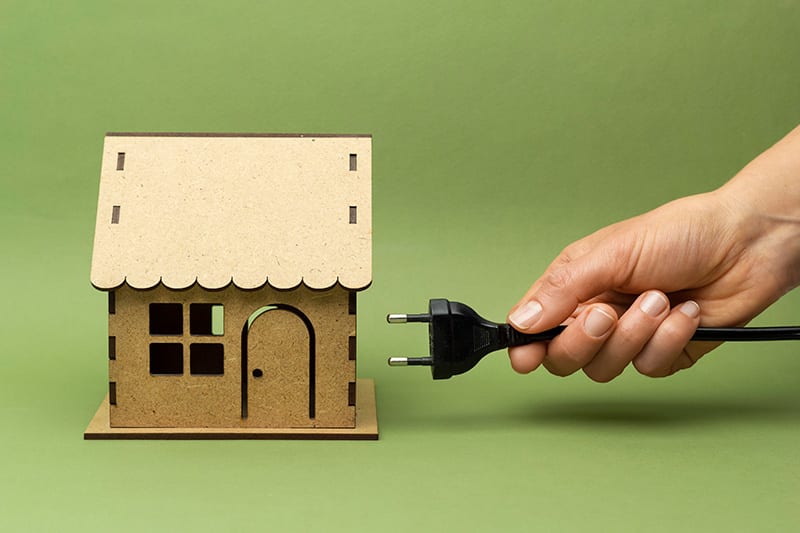

Global policies for a carbon-neutral future mean potential changes for your heating and cooling system.

Our world is rapidly evolving, and now, more than ever, there is growing concern about greenhouse gas emissions and how they accelerate climate change. Global leaders are hoping to quell the crisis by pushing for decarbonization.
Decarbonization aims to reduce carbon emissions through several methods, including new refrigerants, increased energy efficiency standards and electrification, all of which are affecting change in the heating and cooling industry.

Electrification: Coming To A City Near You Soon
Electrification refers to the process of replacing fossil fuel or natural gas burning equipment with similar electric equipment, appliances, or systems. It’s a component of decarbonization that can be implemented with currently available products.
In America, state and local governments are leading the charge with electrification policies, including building code revisions that encourage all-electric communities. The U.S. government is doing its part as well, establishing a series of goals to cool the effects global warming, including:
- By 2030: Reduce carbon emissions by 50-52% below 2005 levels
- By 2035: 100% clean energy
- By 2050: Carbon emissions reduced to net zero1

Benefits Of Electrification
Creating an all-electric comfort system that includes a Comfortmaker heat pump can reap many benefits, including:
- A reduction of carbon dioxide emissions by 38-53% over a 15-year period and reduce 20-year global warming potential by 53-67% when compared to a gas furnace.2
- Improved summer comfort if the home is currently not air conditioned.
- Available federal tax credits and local utility company rebate programs can help cover some of the costs of a new high-efficiency heat pump

Electrification Made Easy with Comfortmaker Comfort Systems
Comfortmaker offers a comprehensive collection of products that can electrify your comfort. These electric solutions can replace natural gas or propane in virtually any installation or climate.
- Heat pumps: Our best heat pumps can provide warm, energy-efficient heating, even when it’s below freezing outside. Depending upon the model, Comfortmaker heat pumps offer ENERGY STAR® certified efficiencies and several leading-edge comfort technologies.
- Ductless split comfort systems: Our all-electric ductless split systems offer high-efficiency operation while reducing the energy loss associated with forced-air systems (up to 20%3). Ductless systems also save electricity by providing heating or cooling to designated areas, not the entire home.
- Dual-fuel systems: Replacing an aging air conditioner with a heat pump can help reduce your home’s carbon footprint. How? Pairing an electric heat pump with a gas furnace can reduce reliance on gas or propane by heating your home with the most efficient fuel source for current outside temperatures.
- Geothermal comfort systems: By using a renewable energy source – geothermal energy – geothermal heat pumps can cut CO2 emissions by 25-65%.4 Geothermal heat pumps can reduce home heating and cooling costs compared to forced-air HVAC systems, with savings as high as 70 percent. 5

Comfortmaker – Your Trusted Partner In Comfort
Changes are coming, decarbonization is happening, new regulations are being implemented, and Comfortmaker is here to help. We have a history of anticipating regulatory changes and consistently making advancements in HVAC technology. That’s why we are so well positioned with products designed to deliver high-efficiency indoor comfort in a decarbonized world. And when you choose Comfortmaker , you not only have your choice of high-efficiency all-electric comfort solutions, but you’ll also benefit from the expertise and recommendations of your local Comfortmaker dealer.
1 https://www.whitehouse.gov/wp-content/uploads/2021/10/US-long-term-strategy.pdf
3 https://www.energystar.gov/campaign/heating_cooling/duct_sealing/benefits
4 https://www.energy.gov/eere/articles/making-difference-geothermal-heat-pumps
5 Savings calculated using LoopLink® software. Comparison based on simulation in Dallas, TX. 6-ton unit vs. standing pilot propane furnace, standard air conditioner and local fuel rates. Actual savings will vary based on configuration, weather and local energy costs.